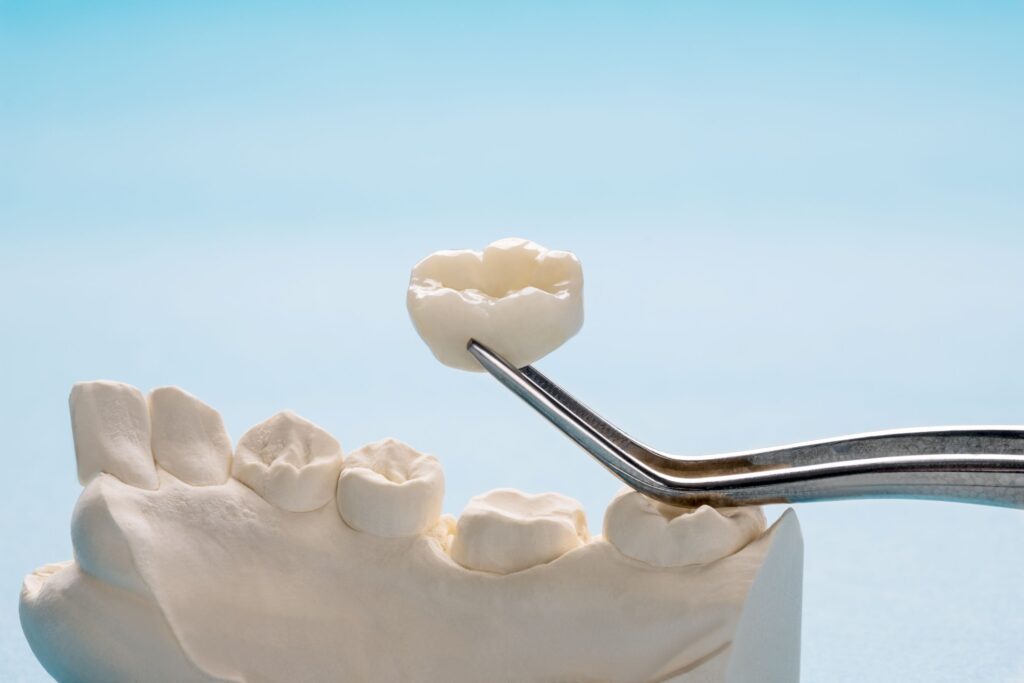If you have a damaged or decayed tooth or recently underwent a root canal, your dentist will likely fit you with a dental crown to restore its functionality and appearance. These tooth-shaped caps are made from resilient ceramic or resin and are customized to look just like your natural teeth. Your dentist places them over injured teeth so you can continue to use them normally.
However, you might hesitate to schedule your procedure if you’re worried about a lengthy or painful recovery. Continue reading to learn 3 helpful tips that can help you heal once your prosthetic is placed!
Tip #1: Watch What You Eat
You’ll be numbed and/or sedated for the procedure itself, and the effects are likely to last for several hours following your appointment. Try not to eat or drink anything too hot, because you might burn your mouth if you can’t sense the temperature.
Also, avoid overly hard, crunchy, or sticky foods that might push your yank your dental crown off your tooth. If you feel sensitivity when you bite down or chew, you should steer clear of anything too hot, cold, or spicy. You might find it helpful to stick to softer, blander foods for the first day or two after your procedure, like applesauce, mashed potatoes, scrambled eggs, pasta, and yogurt.
Tip #2: Address Discomfort
Your dentist must remove a small amount of enamel from your tooth for your prosthetic to fit correctly, so it’s normal to feel somewhat sore for a few days as your mouth adjusts to the change. Thankfully, there are several things you can do to soothe your tender teeth and gum tissues.
For instance, you can apply a small amount of oral gel containing benzocaine for a temporary, numbing reprieve. It’s also usually safe to take over-the-counter medications for any associated aches or inflammation, like Tylenol or ibuprofen. Typically, discomfort is mild and resolves itself within a few days to a couple of weeks. If you experience persistent or severe pain, contact your dentist so they can ensure you’re healing as intended.
Tip #3: Keep Your Mouth Clean
Your mouth contains billions of bacteria, and though some of them are beneficial, others contribute to oral issues like tooth decay and gum disease. If they penetrate your enamel or gums around your dental crown, you could develop an infection that can harm your restoration and dental well-being.
However, you should avoid brushing and flossing your dental crown for the first 24 hours to give your sensitive tissues time to recover. Instead, rinse with warm salt water to naturally disinfect your mouth while drawing out any fluid buildup to reduce swelling and throbbing. You can resume gently brushing and flossing as usual when it feels safe or when your dentist gives you the green light.
Your dental team will provide detailed instructions for you to follow your procedure so that you can heal as quickly as possible without developing complications.
Meet the Author
Dr. Jayson Voto has nearly 20 years of experience helping local families build and maintain happy, healthy smiles. He earned his dental degree from the University of Oklahoma College of Dentistry and stays up to date with current dental techniques with active participation in several professional organizations, including the American Dental Association. He enjoys working with people of all ages and utilizes state-of-the-art equipment to enhance patient comfort while increasing the accuracy of treatment results. If you need to repair a broken tooth, you can request an appointment on the website or call (918) 272-5381.

